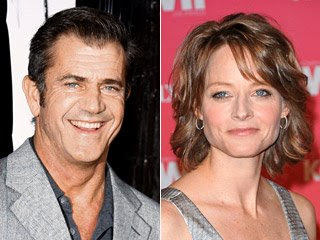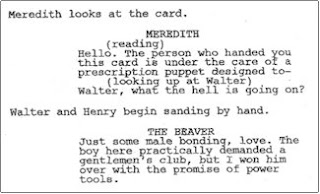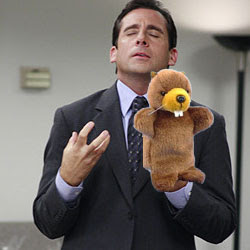Even Shakespeare Failed
After my last project, I needed to renew my mind and soul. So I’m reading Harold Bloom’s Shakespeare: The Invention of The Human. I’m now 300 pages into this 700-page book, and my cup already runneth over. It’s deep analysis of characters, some of the greatest in all of literature, and the genius of Shakespeare unfolding before me play by play. I’ve added Bloom’s book to my sidebar, and I daresay, this should be required reading for every writer. His book will forever alter your perspective, and perhaps even approach to, characters.
In a recent article on Kurosawa, I suggested that no other filmmaker has created more masterpieces. So out of 30 films he made, how many would you say are masterpieces? 10? 15, perhaps? Consider that Shakespeare wrote 39 plays and critics agree that about two dozen or so are masterpieces. So the answer to the question, “Why are you reading about Shakespeare?” can only be, “Who else is there?”

I’m no expert on Shakespeare. The book was enlightening for me in many ways - like how Shakespeare was for so long under the shadow, influence, and popularity of Christopher Marlowe; how so many early plays were imitation Marlowe; and how Shakespeare struggled to get out from under that influence to find a fresh approach and his own unique voice, which took time. Genius never happens overnight.
His were characters of depth, both good and bad, very little of this “sympathetic protagonist with a goal” crap (and he luckily didn’t have gurus who would’ve limited his genius with narrow-thinking ideas about stories). Shakespeare is storytelling unlimited, unhindered, and undiluted. It's bottomless depth. It’s characters, story, and lots of poetry. Fascinating, too, that Shakespeare was pointedly ambiguous about many subjects and had so many characters with so many differing points of view, that it’s difficult to nail down who the scribe really was and what he truly thought. It’s staggering not just the sheer volume of characters but how his greatest characters like Rosalind, Falstaff, and Hamlet, differ so distinctly from one another.
 But Shakespeare failed. Oh, how he failed. He failed because he hadn’t mastered his craft yet in his youth. He failed because he experimented. He failed because he took short cuts. He failed because he was lazy at times. He failed because… that happens to every writer. On The Two Gentlemen of Verona, Bloom wrote:
But Shakespeare failed. Oh, how he failed. He failed because he hadn’t mastered his craft yet in his youth. He failed because he experimented. He failed because he took short cuts. He failed because he was lazy at times. He failed because… that happens to every writer. On The Two Gentlemen of Verona, Bloom wrote: Never popular, whether in Shakespeare’s time or our own, the Two Gentlemen might merit dismissal were it not partly rescued by the clown Launce, who leaps into life, and Launce’s dog, Crab, who has more personality than anyone else in the play except Launce himself.
Toward the end of the play, one of the two “Gentlemen” tries to rape a girl named Silvia, just as the other “Gentleman” interrupts and the two reconcile from a previous conflict. Bloom writes: …poor Silvia never utters another word in the play after she cries out ‘O Heaven!’ when the lustful Proteus seizes her to commence his intended rape. What is the actress playing Silvia to do with herself during the final hundred lines of The Two Gentlemen of Verona? She ought to whack Valentine with the nearest loose chunk of wood, but that would not knock any sense into the lummox or into anyone else in this madness…

Of Richard III, Bloom says:
…this Richard has no inwardness, and when Shakespeare attempts to imbue him with an anxious inner self, on the eve of his fatal battle, the result is poetic bathos and dramatic disaster. Starting up out of bad dreams, Richard suddenly does not seem to be Richard, and Shakespeare scarcely knows how to represent the change:
Give me another horse! Bind up my wounds!
Have mercy, Jesu! – Soft, I did but dream.
O coward conscience, how dost thou afflict me!
The lights burn blue; it is now dead midnight.
Cold fearful drops stand on my trembling flesh.
What do I fear? Myself? There’s none else by;
Richard love Richard, that is, I am I.
Is there a murderer here? No. Yes, I am!
Then fly. What, from myself? Great reason why,
Lest I revenge? What, myself upon myself?
Alack, I love myself. Wherefore? For any good
That I myself have done unto myself?
O no, alas, I rather hate myself
For hateful deeds committed by myself.
I am a villain – yet I lie, I am not!
Fool, of thyself speak well! Fool, do not flatter.
My conscience hath a thousand several tongues,
And every tongue brings in a several tale,
And every tale condemns me for a villain:
Perjury, perjury, in the highest degree;
Murder, stern murder, in the direst degree;
All several sins, all us’d in each degree,
Thron to the bar, crying all ‘Guilty, guilty!’
I shall despair. There is no creature loves me,
And if I die, no soul will pity me –
And wherefore should they, since that I myself
Find in myself no pity to myself?
Methought the souls of all that I had murder’d
Came to my tent, and every one did threat
Tomorrow’s vengeance on the head of Richard.
I cannot think of another passage, even in the tedious clamor of much of the Henry VI plays, in which Shakespeare is so inept. Soon enough, the playwright of Richard III would transcend Marlowe, but here the urge to modify from speaking cartoon to psychic inwardness finds no art to accommodate the passage…

On Julius Caesar, Bloom questions why Shakespeare didn't exploit the father-son relationship between Julius Caesar and Brutus:
Brutus is an unfinished character because Shakespeare exploits the ambiguity of the Caesar-Brutus relationship without in any way citing what may be its most crucial strand. Julius Caesar has an implicit interest as a study in what shades upon patricide, but Shakespeare declines to dramatize this implicit burden in the consciousness of Brutus.
On Titus Andronicus:
…I can concede no intrinsic value to Titus Andronicus. It matters only because Shakespeare, alas, undoubtedly wrote it, and by doing so largely purged Marlowe and Kyd from his imagination… Titus Andronicus performed an essential function for Shakespeare, but cannot do very much for the rest of us.

All of this tough criticism for the greatest writer who ever lived. The weak plays were necessary stepping stones to achieve the masterpieces. And baby, Bloom’s enthusiasm for the masterpieces is so infectious. I love all the great moments Bloom shares from the plays, like this portion from The Taming of the Shrew:
From this moment on, Kate firmly rules while endlessly protesting her obedience to the delighted Petruchio, a marvelous Shakespearean reversal of Petruchio’s earlier strategy of proclaiming Kate’s mildness even as she raged on. There is no more charming a scene of married love in all Shakespeare than this little vignette on a street in Padua:
Kath: Husband, let’s follow, to see the end of this ado.
Pet: First kiss me, Kate, and we will.
Kath: What, in the midst of the street?
Pet: What, art thou ashamed of me?
Kath: No, sir, God forbid; but ashamed to kiss.
Pet: Why, then, let’s home again. Come, sirrah, let’s away.
Kath: Nay, I will give thee a kiss. Now pray thee, love, stay.
Pet: Is not this well? Come, my sweet Kate. Better once than never, for never too late.
One would have to be tone deaf (or ideologically crazed) not to hear in this subtly exquisite music of marriage at its happiest. I myself always begin teaching the Shrew with this passage, because it is a powerful antidote to all received nonsense, old and new, concerning this play...

I loved what he said about Mercutio’s death in Romeo and Juliet. This passage follows Mercutio’s “a plague on both your houses” speech:
That indeed is what in his death Mercutio becomes, a plague upon both Romeo of the Montagues and Juliet of the Capulets, since henceforward the tragedy speeds on to its final double catastrophe. Shakespeare is already Shakespeare in his subtle patterning, although rather overlyrical still in his style. The two fatal figures in the play are its two liveliest comics, Mercutio and the Nurse. Mercutio’s aggressivity has prepared the destruction of love, though there is no negative impulse in Mercutio, who dies by the tragic irony that Romeo’s intervention in the duel with Tybalt is prompted by love for Juliet, a relationship of which Mercutio is totally unaware. Mercutio is victimized by what is most central to the play, and yet he dies without knowing what Romeo and Juliet is all about: the tragedy of authentic romantic love. For Mercutio, that is nonsense: love is an open arse and a poperin pear. To die as love’s martyr, as it were, when you do not believe in the religion of love, and do not even know what you are dying for, is a grotesque irony that foreshadows the dreadful ironies that will destroy Juliet and Romeo alike as the play concludes.

And when Bloom gets going on his favorite characters, like Rosalind in As You Like It, get ready for a feast of insights.
…Rosalind, least ideological of all dramatic characters, surpasses every other woman in literature in what we could call “intelligibility.” You never get far by terming her a “pastoral heroine” or a “Romantic comedian”: her mind is too large, her spirit too free, to so confine her. She is as immensely superior to everyone else in her play as are Falstaff and Hamlet in theirs... To be in love, and yet to see and feel the absurdity of it, one needs to go to school with Rosalind. She instructs us in the miracle of being a harmonious consciousness that is also able to accommodate the reality of another self. Shelley heroically thought that the secret of love was a complete going-out from our own nature into the nature of another; Rosalind sensibly regards that as madness. She is neither High Romantic nor a Platonist: love’s illusions, for her are quite distinct from the reality of maids knowing that “the sky changes when they are wives.” One might venture that Rosalind as an analyst of “love” is akin to Falstaff as an analyst of “honor” – that is to say, of the whole baggage of state power, political intrigue, mock chivalry, and open warfare. The difference is that Rosalind herself is joyously in love and criticizes love from within its realm; Falstaff devastates the pretensions of power, but always from its periphery, and knowing throughout that he will lose Hal to the realities of power. Rosalind’s wit is triumphant yet always measured to its object, while Falstaff’s irreverent mockery is victorious but pragmatically unable to save him from rejection. Both are educational geniuses, and yet Rosalind is Jane Austen to Falstaff’s Samuel Johnson; Rosalind is the apotheosis of persuasion, while Falstaff ultimately conveys the vanity of human wishes.















































